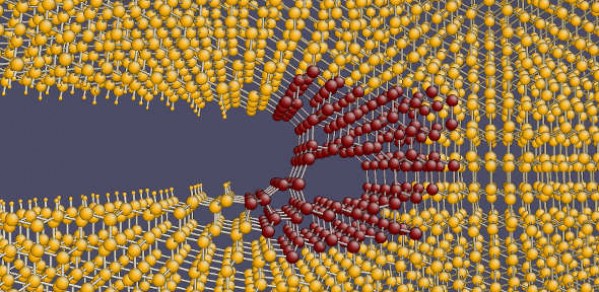
Dr Gabor Csanyi from the Mechanics, Materials and Design division and his team have recently had a research paper published in the journal Nature. The research explores how and why materials crack with the hope that by understanding how cracks propagate, scientists and engineers will be better able to prevent cracks from occurring.
Using computer simulations, they studied the motion of atoms that takes place when cracks occur in brittle materials, such as those used in making electronic devices, solar cells, surface coatings and armour. Surprisingly, it turned out that they needed to resort to using Quantum Mechanics, the most fundamental theory that describes the physical world, to explain why the motion of cracks in silicon are unstable, and why these cracks exhibit jogs and kinks as the two halves of the material part at high speed.

